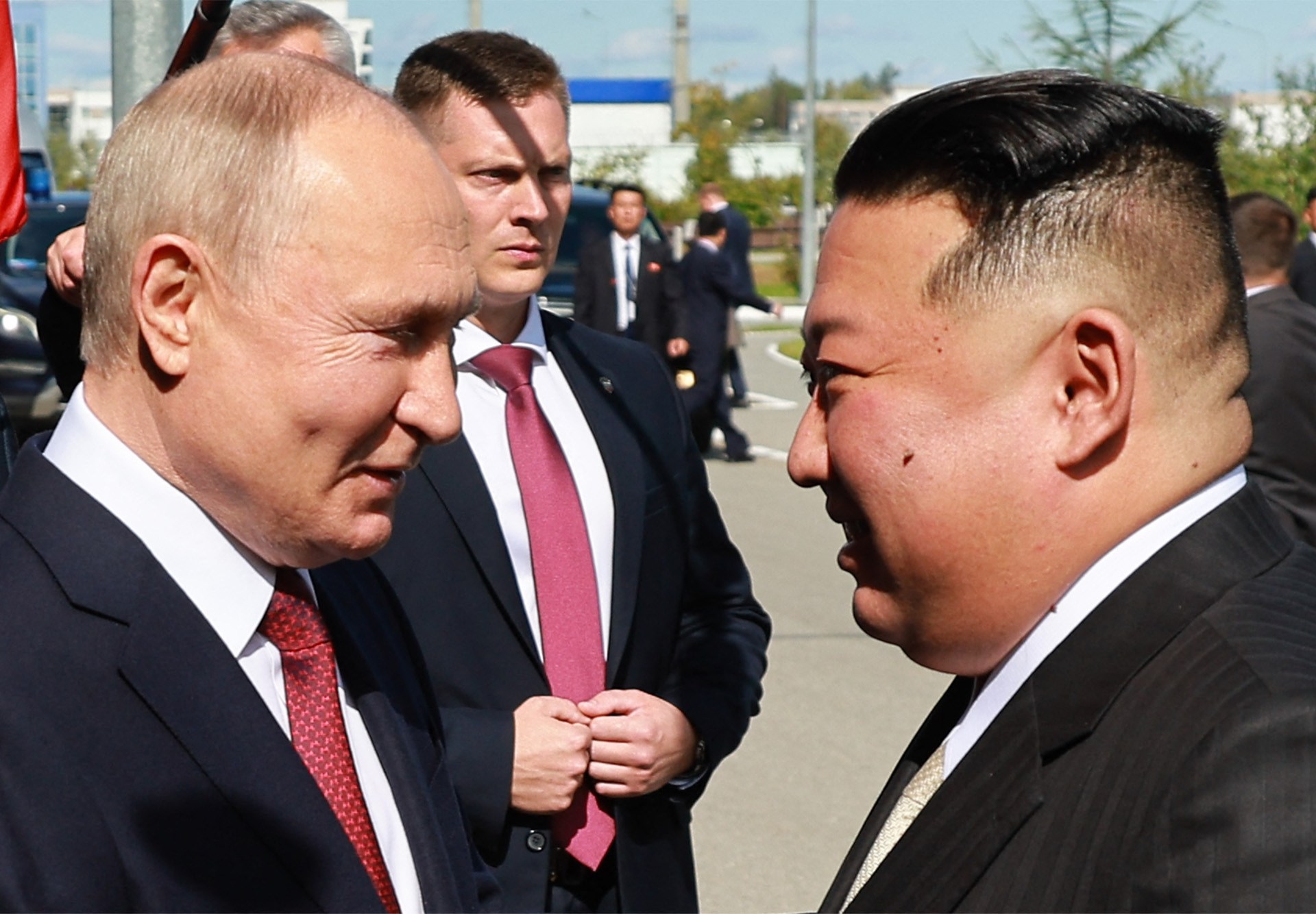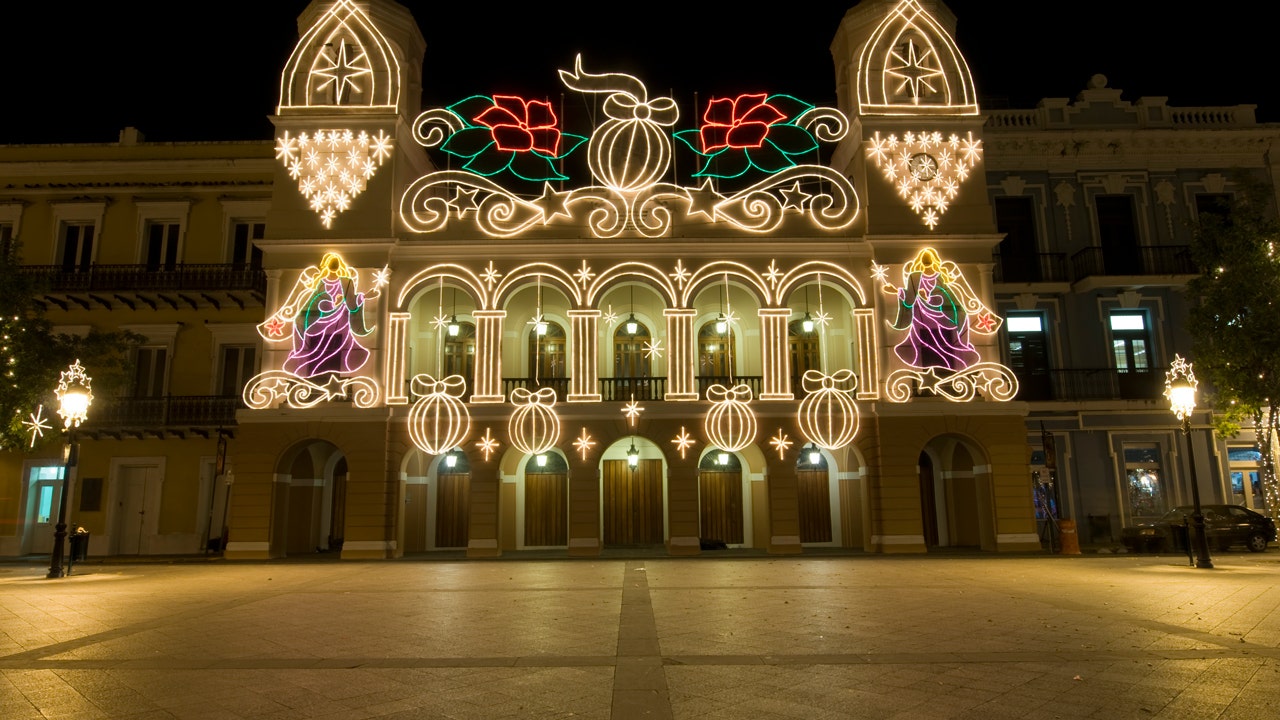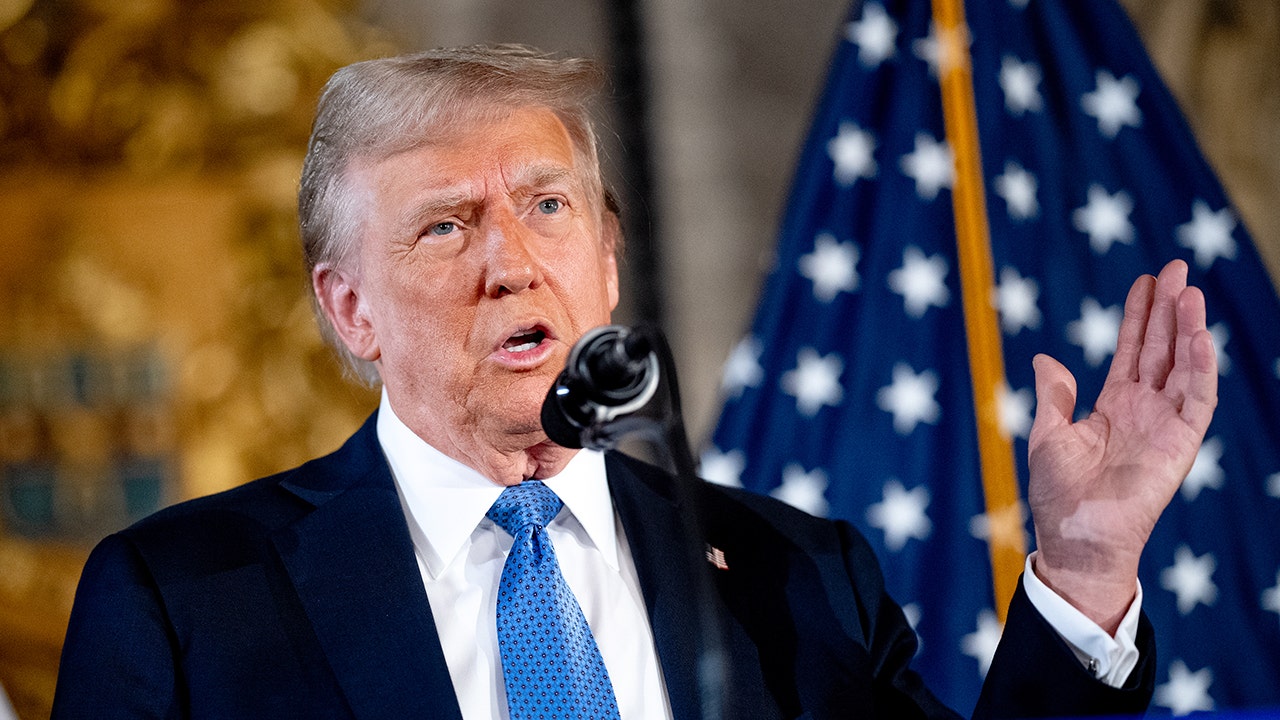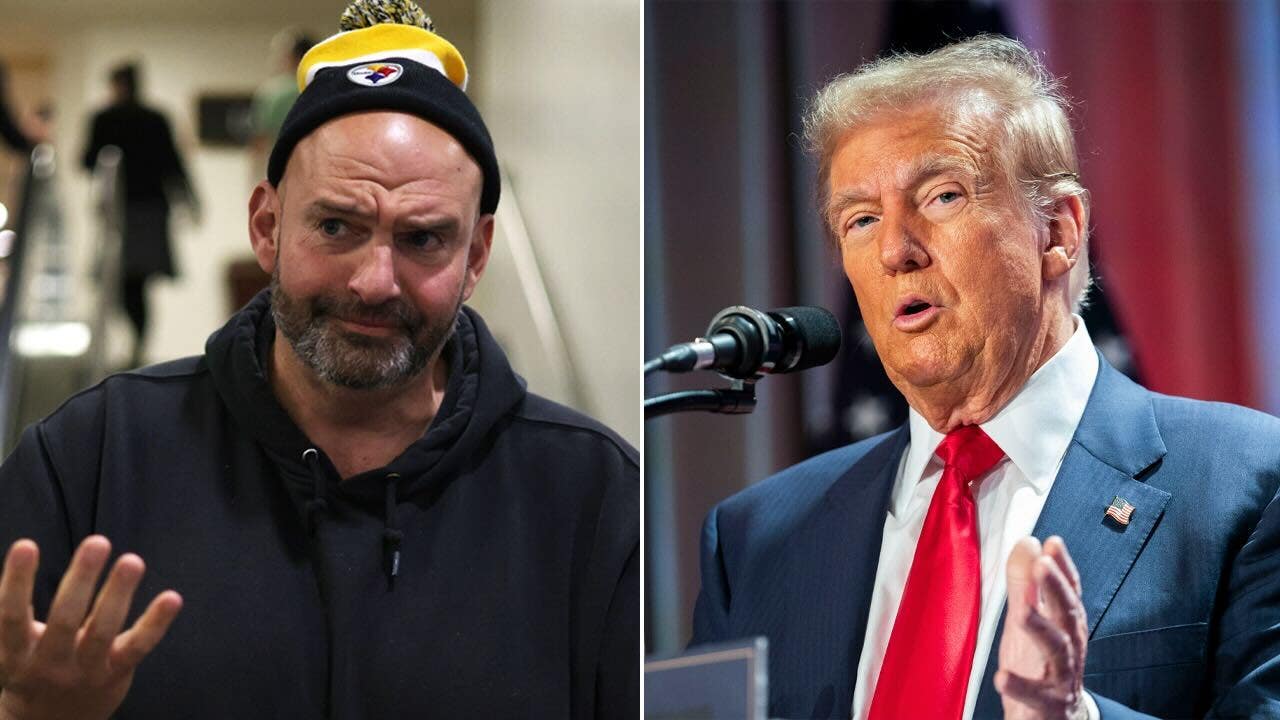World
Putin, Kim gift each other rifles at meeting, and a Russian space glove

Russia’s Putin presented North Korea’s Kim with a Russian rifle of the ‘highest quality’ and received a gun in return.
Russia’s Vladimir Putin and North Korean leader Kim Jong Un gifted each other rifles when they met at a space centre in Russia week, the Kremlin said, while the Russian leader also presented his counterpart from Pyongyang with a glove from a cosmonaut’s space suit.
Travelling onboard his armoured train from North Korea, Kim met with Putin on Wednesday at the Vostochny Cosmodrome in the Amur region of the Russian Far East, where the two leaders greeted each other warmly with a 40-second handshake.
Asked whether the two had exchanged gifts, Kremlin spokesman Dmitry Peskov said on Thursday that Putin gave Kim a high-quality Russian-made rifle and a glove from a spacesuit “that had been in space several times”.
In turn, Kim gave Putin a North Korean-made gun, among other gifts, Peskov said.
The Russian president “gave [Kim] a rifle from our production of the highest quality. In return, he also received a North Korean-made rifle,” Peskov said.
Putin has a keen interest in the outdoor life and hunting, posting numerous photos of himself over the years engaged in outdoor pursuits in the Russian countryside with other senior officials.
Moscow also confirmed on Thursday that Putin “gratefully accepted Kim’s invitation” to visit the North Korean capital, Pyongyang, which North Korea’s state television had earlier announced.
Peskov said Moscow will first “quickly prepare” to send Russia’s Foreign Minister Sergei Lavrov to Pyongyang, with his trip expected in October, before a Putin visit can be arranged.
It would be Putin’s second trip to North Korea. He last visited in July 2000 to meet Kim’s late father Kim Jong-il, just months after being elected to the presidency. Kim last visited Russia in 2019.
While Putin returned to Moscow after their meeting on Wednesday, Kim’s visit is expected to continue for several more days, the Kremlin said.
On Friday, Kim arrived in the Russian Far Eastern city of Komsomolsk-on-Amur to visit a facility where Russian fighter jets are built, Russia’s state-run TASS news agency reported.
TASS reported that Kim was met by the regional governor and other officials on a red carpet at the town’s railway station. He was then whisked off to the Komsomolsk-on-Amur Aircraft Plant, which produces Russia’s most modern warplanes, including the Su-35 and Su-57, TASS said.

Russian state news agency RIA Novosti published a video which showed Kim’s armoured train pulling into the Komsomolsk-on-Amur station as North Korean officials waited by a specially constructed ramp and red carpet. Shortly afterwards, his convoy swept out of the station to visit the aircraft plant.
Putin told Russian state TV earlier that Kim would also travel to Vladivostok to view Russia’s Pacific fleet, a university and other facilities.
In North Korea, state media have praised Kim’s summit with Putin as “historic”.
South Korean media reported that officials in Seoul are monitoring whether North Korea and Russia will announce joint military drills following the meeting of the two leaders.
There is growing concern about increased military cooperation between Moscow and Pyongyang as Putin and Kim’s delegations include senior military figures.
South Korea’s Defence Ministry spokesman Jeon Ha-kyou said there “have been numerous such predictions” regarding closer military ties between Putin and Kim.
“While keeping that possibility in mind, [we] will continue to closely monitor for it,” the spokesman said, according to South Korea’s Yonhap News Agency.

World
Italian state railways plans 1.3 bln euro investment in solar plant

World
Christmas in Puerto Rico is a 45-day celebration with caroling, festive decorations, family feasts and more

Christmas, Navidad in Puerto Rico, extends far beyond Dec. 25.
The island proudly proclaims itself as having the “longest holiday season in the world,” according to the website Discover Puerto Rico.
On average, the holiday festivities in Puerto Rico last about 45 days, per the source, commencing right after Thanksgiving, and stretching all the way through mid-January.
The Christmas season in Puerto Rico typically lasts around 45 days. (iStock)
HOW TO SAY ‘MERRY CHRISTMAS’ IN 10 LANGUAGES TO FRIENDS AROUND THE WORLD
The holiday season in Puerto Rico is full of rich traditions beloved by families.
One tradition those who visit Puerto Rico will immediately notice during the holiday season is decorations.
In Puerto Rico, decorations are typically put up by Thanksgiving, and kept up until the season concludes in mid-January, with opportune picture moments at every corner.
Parrandas, Christmas caroling, is a holiday staple.
17 SECRET TRAVEL TIPS FOR FALL AND WINTER THAT AREN’T SO SECRET AFTER ALL
Carolers choose houses of family and friends to visit, typically starting around 10 p.m., performing aguinaldos (traditional Christmas songs), with not only their voices, but often with instruments as well, according to Discover Puerto Rico.
The group you begin caroling with is likely not the same group you end with.
In Puerto Rico, when carolers visit a house, they’ll often stop inside for conversation, food and drink before moving to the next residence.

Coquito is a popular beverage enjoyed during the holiday season in Puerto Rico. Coconut, vanilla and rum are among the ingredients. (Mayra Beltran/Houston Chronicle via Getty Images)
Usually, the residences of the house visited will join the group for the next house, according to Discover Puerto Rico.
CHRISTMAS TREES IN GERMANY WERE DECORATED WITH APPLES INSTEAD OF ORNAMENTS IN THE 1600S FOR ‘ADAM AND EVE DAY’
A night of serenading loved ones can last quite a while, often stretching into the early morning hours of the following day, according to the source.
The biggest day of the holiday season in Puerto Rico actually isn’t Christmas, but instead, the night before.
In Puerto Rico, Dec. 24 is Nochebuena. On that day, loved ones gather for the exchange of gifts, caroling and a large feast.
Many families will also attend a midnight Mass on the day, known as Misa de Gallo.
FLIGHT ATTENDANTS REVEAL THE SURPRISING DAY TO TRAVEL AHEAD OF THE CHRISTMAS RUSH
After Christmas passes, the festivities go on in Puerto Rico.
Another big event in the holiday lineup is Three Kings Day on Jan. 6, a holiday that “commemorates the visit that the Three Wise Men paid to Jesus after his birth,” according to Discover Puerto Rico.
On the eve of the day, children fill up a shoebox with grass to be left for camels to munch on while the Three Kings leave behind gifts for them, according to PuertoRico.com.
For a particularly festive Three Kings Day, Juana Díaz is the place to go, as it hosts the largest celebration in Puerto Rico for the holiday. In Juana Díaz, there is an annual festival and parade in honor of Three Kings Day that brings together over 25,000 people every year, according to Discover Puerto Rico.

Gifts are primarily exchanged between loved ones on Christmas Eve in Puerto Rico. (iStock)
Then, eight days later is Octavitas, a post-holiday celebration where families get together and celebrate one last time for the season.
The end of the holiday season is marked with the San Sebastián Street Festival.
This festival, spanning over multiple days, takes place in Old San Juan, and is filled with live music, dancing, shopping and parades.
World
Small plane crashes into Brazil town popular with tourists, killing 10

Twin-engine plane crashed in largely residential neighborhood of Gramado shortly after takeoff, authorities say.
A small plane has crashed into a tourist hotspot in southern Brazil, killing all 10 people on board and injuring more than a dozen people on the ground, officials have said.
The twin-engine Piper PA-42-1000 hit the chimney of a home and the second floor of a different house before crashing into a shop in a largely residential neighbourhood of Gramado shortly after takeoff from Canela, Brazil’s Civil Defense agency said on Sunday.
Rio Grande do Sul Governor Eduardo Leite told a news conference that the aircraft’s owner and pilot, Luiz Claudio Galeazzi, was killed along with nine members of his family.
Leite said that 17 people on the ground were injured, 12 of whom were still receiving treatment in hospital.
Galeazzi’s company, Galeazzi & Associados, confirmed that its CEO and Galeazzi’s wife and three daughters had died in the crash.
“Luiz Galeazzi will be forever remembered for his dedication to his family and for his remarkable career as a leader of Galeazzi & Associados,” the company said in a post on LinkedIn.
“In this moment of immense pain, Galeazzi & Associados is deeply grateful for the expressions of solidarity and affection received from friends, colleagues and the community. We also sympathize with all those affected by the accident in the region.”
Gramado, located in the Serra Gaucha mountains, is a popular destination for vacationers, especially during the Christmas season.
The crash comes a little more than a year after Brazil suffered its worst air disaster in nearly two decades when a twin-engine plane crashed in the southeastern city of Vinhedo, killing all 62 people on board.
-

 Politics1 week ago
Politics1 week agoCanadian premier threatens to cut off energy imports to US if Trump imposes tariff on country
-
/cdn.vox-cdn.com/uploads/chorus_asset/file/25789444/1258459915.jpg)
/cdn.vox-cdn.com/uploads/chorus_asset/file/25789444/1258459915.jpg) Technology1 week ago
Technology1 week agoOpenAI cofounder Ilya Sutskever says the way AI is built is about to change
-

 Politics1 week ago
Politics1 week agoU.S. Supreme Court will decide if oil industry may sue to block California's zero-emissions goal
-
/cdn.vox-cdn.com/uploads/chorus_asset/file/25546252/STK169_Mark_Zuckerburg_CVIRGINIA_D.jpg)
/cdn.vox-cdn.com/uploads/chorus_asset/file/25546252/STK169_Mark_Zuckerburg_CVIRGINIA_D.jpg) Technology1 week ago
Technology1 week agoMeta asks the US government to block OpenAI’s switch to a for-profit
-

 Business1 week ago
Business1 week agoFreddie Freeman's World Series walk-off grand slam baseball sells at auction for $1.56 million
-
/cdn.vox-cdn.com/uploads/chorus_asset/file/23951353/STK043_VRG_Illo_N_Barclay_3_Meta.jpg)
/cdn.vox-cdn.com/uploads/chorus_asset/file/23951353/STK043_VRG_Illo_N_Barclay_3_Meta.jpg) Technology1 week ago
Technology1 week agoMeta’s Instagram boss: who posted something matters more in the AI age
-
News1 week ago
East’s wintry mix could make travel dicey. And yes, that was a tornado in Calif.
-
/cdn.vox-cdn.com/uploads/chorus_asset/file/24924653/236780_Google_AntiTrust_Trial_Custom_Art_CVirginia__0003_1.png)
/cdn.vox-cdn.com/uploads/chorus_asset/file/24924653/236780_Google_AntiTrust_Trial_Custom_Art_CVirginia__0003_1.png) Technology2 days ago
Technology2 days agoGoogle’s counteroffer to the government trying to break it up is unbundling Android apps
















